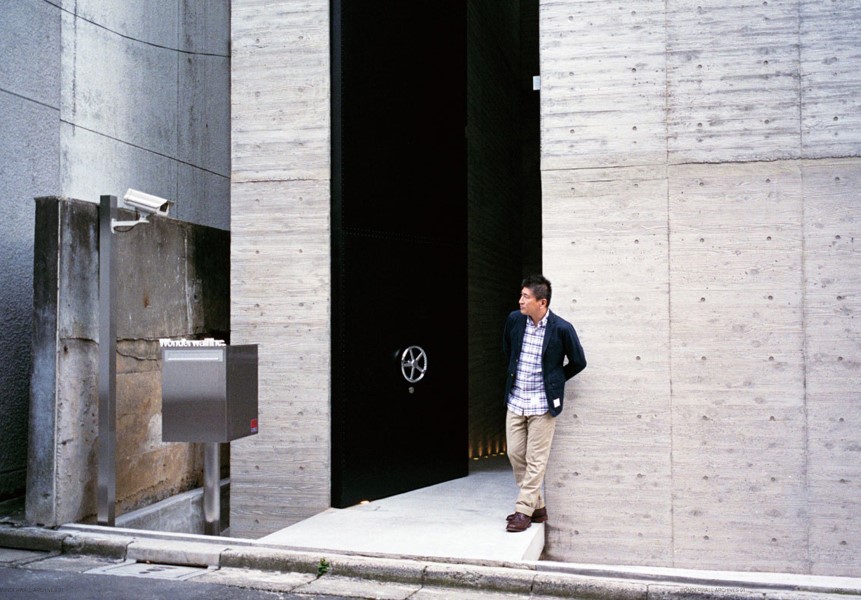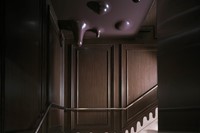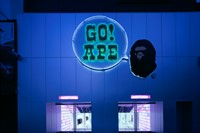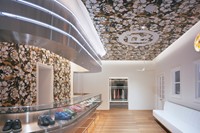Tokyo-based interior designer Masamichi Katayama, head of the Japanese firm Wonderwall, is one of the word’s foremost architects of extraordinarily innovative retail environments, bars, restaurants, offices and showroom spaces. Over the past ten
Tokyo-based interior designer Masamichi Katayama, head of the Japanese firm Wonderwall, is one of the word’s foremost architects of innovative retail environments, bars, restaurants, offices and showroom spaces. Over the past ten years, Katayama and his team have created spaces for Colette, A Bathing Ape, UNIQLO, renowned Tokyo pastry boutique Pierre Hermé and Nike and are currently working on a private studio in Brooklyn for graffiti artist KAWS. To celebrate Wonderwall's 10th anniversary, projects completed since 1998 have been included in a new book entitled Archive 01 and an accompanying exhibition is currently travelling throughout Japan. Whilst he might not consider himself an artist in the strict and often overwrought definition of that appellation, many fashion and design observers beg to disagree. AnOther recently spoke with Katayama to get his thoughts on the matter.
What is your aesthetic?
It is not a physical thing, but it’s more about using design as a tool to reach the subconscious.
What are the themes that you are trying to communicate through your design?
To me, the purpose of interior design is to interpret the client’s brand or corporate identity and their attributes through the space and the environment. I very much value the voice of the client and other people involved in that organisation; I do a lot of research and analysis and try to create a space that would project their strengths and a sensibility that they may not be able to capture in words. My aim is to design a communication conduit where one can sense and experience the client’s philosophy through the overall space. I don’t know if you can call it a philosophy, but I am a designer and not an artist so my role is about creating spaces that are an extension and an enhancement of what the client wishes to convey.
You’ve worked on over 60 projects for A Bathing Ape. What was that collaborative process like?
It is a very simple process. Once Nigo [founder of A Bathing Ape] finds a location, we meet almost immediately. He advises me of the overall direction and we usually present him with an idea along with a scale model within several weeks. We usually do not meet again until the handover or sometimes until the opening reception. Since we’ve worked together for many years, we will meet as little as once or as much as three times per project before its completion. It's a very intuitive experience.
What materials are essential to your design philosophy?
I am not sure if this would be considered a material but lighting is very important to me. Not just artificial lighting, but natural lighting; the reflection from the products or merchandise or even the people that come in and so forth.
How did the idea for the Archives 01 exhibition and book come about?
Parco, which has a publishing department that specialises in art and design books, approached us and proposed a book to celebrate Wonderwall’s 10th anniversary. There have previously been two Wonderwall monographs which have been published through Frame in the Netherlands. I thought that through a project like this, a domestic publisher might be able to publish a book that was more accessible and possibly more affordable for students and a younger audience. They also offered to do an exhibition of our scale models. I use scale models not just for the client, but also to clarify my ideas and imagery. I thought it would be interesting for a wider audience to them help understand the working process.
Could you talk a little about a few of the project models that are on display in the exhibition?
Nowhere in Harajuku was the first project I worked on with Nigo in 1998. This particular store has been remodelled and relocated since, but I consider this my milestone project. I designed this store as if I was designing some sort of large vehicle. I really broke all the rules in retail design such as not having a display window, incorporating stairs inside the selling area and so forth, but it drew a lot of attention and will always be a very memorable project for me. Our Wonderwall office was completed in 2009. Since it is an office, it is not open for the public, although I do hope that people will come and visit virtually! I designed both the interior as well as the architectural direction. The most difficult part was the space composition — it is five storeys with two levels below ground and three floors above ground. I decided to focus on the verticality, giving the main conference room on the ground floor a two-storey high ceiling and adding skylights in the stairway.
Are your projects works of art?
I am definitely a designer and not an artist. I don’t create things on my own based on my personal feelings. I design based on a proposal or request.
What do you enjoy most about interior design?
Whether it be a store or a restaurant, I enjoy going back to the location I designed as a customer.
How is your sense of what is modern reflected in your work?
I try not to judge or categorise the information or knowledge I have or receive. I try to create new things everyday by combining and using the knowledge I have as logistically as possible.
What projects do have coming up?
The Mackintosh London store is opening its first flagship on Mount Street in Mayfair; they had a soft opening in November 2010. Also, a bar lounge called OZONE in the brand new Ritz-Carlton Hotel in Hong Kong is opening in March 2011. It will be on the 118th floor so it will be the world’s highest bar.
Wonderwall's Archive 01 exhibition will open at The Parco Gallery, Nagoya in Spring 2011.
Text by Ricky Lee



